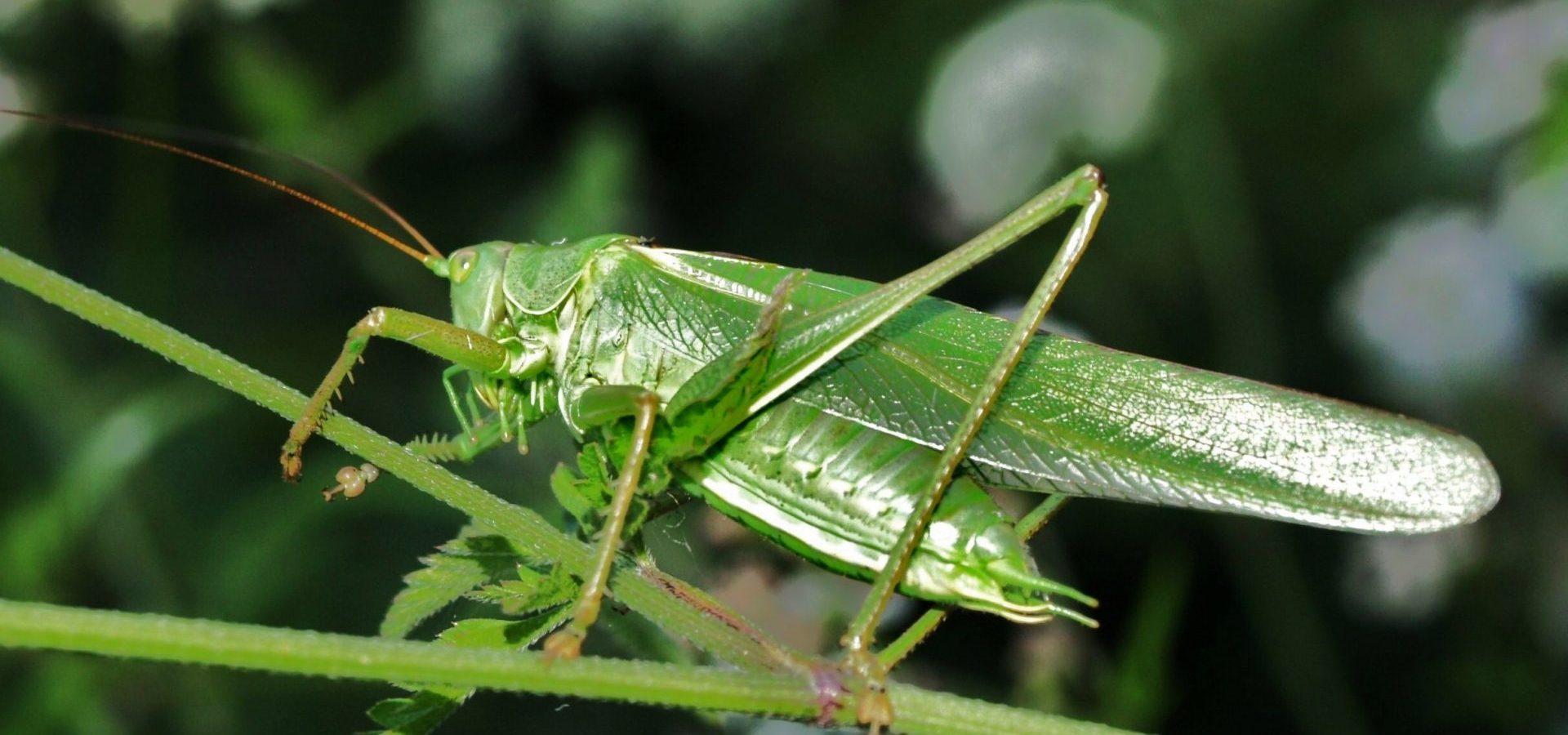(nur auf Englisch)
The great green grasshopper alert in the middle of summer.
After being in a lockdown all spring, a sunny summer has come back in August so we could admire nature and see the great green grasshopper again.
Jean-Henri Fabre, an eminent naturalist from Aveyron, was the first to become interested about it, capturing it to study and recording his remarks in his famous Entomological Memories.
Remarkable by its 5 cm size and its filiform 8 cm antennae, this local animal, symbol of reincarnation and cheerfulness, passes unnoticed under the sun, with its bright green colour.
Its latin name « tettigonia viridissila » (L.) originally means « little green cicada », which led the French fabulist Jean de la Fontaine to make a mistake by confusing it with the cicada in his famous fable « the cicada and the ant », an obvious mistake coming from the Greek Aesop, another fabulist from the 6th century from whom he took his inspiration.
To attract females, the male stridulates by emitting ultrasounds produced with its two elytra, like the country cricket, which belongs to the same family of the orthopterans.
The sound of these incessant vibrations emitted in a green camouflage environment (trees, bushes, tall grasses…) can reach a distance of 200 metres.
In the past, children used to run after grasshoppers that flew away at harvest time when the mowers passed by. They would catch them in the wheat, lock them in cages to see them sing frantically and sometimes they would even savour their crayfish-flavoured legs.
A little-known assistant of gardeners, this flying and jumping grasshopper is active night and day, is mainly carnivorous (beetles, caterpillars, aphids, locusts), and even sometimes cannibalistic as well as frugivorous (blackberries, pears, raspberries).
In the South of France, it is know as the « cicada’s executioner » as it is the predator of that species, which it gutted by surprise when resting in the trees.
Under the knee joint, its legs hide very sensitive tiny eardrums that help to perceive sounds two octaves higher than human hearing.
This morphological constitution gives the grasshopper the possibility to locate its fellows as well as the bat, its threatening enemy.
![]()
© Streffen L. ![]()
© Streffen L. ![]()
© Yves Meurville
A long mating makes it easy for the female to collect and devour the male’s sperm deposited near its vaginal opening.
This particular feature in locustians triggers the layout of about 100 eggs at a depth of 3 cm in the soil in autumn, thanks to an ovicapte.
They will spend winter there and hatch in the spring. The juveniles moult seven times before becoming adult: their metamorphosis lasts for 9 months.
However, intensive cultivation, systematic mowing of tall deciduous grasses and the use of insecticides and herbicides are progressively eliminating this radiant creature, which no longer has a habitat and healthy soil in which to live.
However, if you happen to visit a wasteland at the end of the afternoon, you may be lucky enough to come across a large green grasshopper chasing locusts, and this will become an unforgettable memory.
With the authorization of l’Est Eclair / Libération Champagne
Some links to continue your discoveries about nature:
- the great green grasshopper, the cicada – Entomological Memories – Volumes V and VI by J.H. Fabre
- studio les 3 becs (for his singing)
Header photo The great green grasshopper © Yves Meurville and featured photo Grasshopper © Streffen L.





